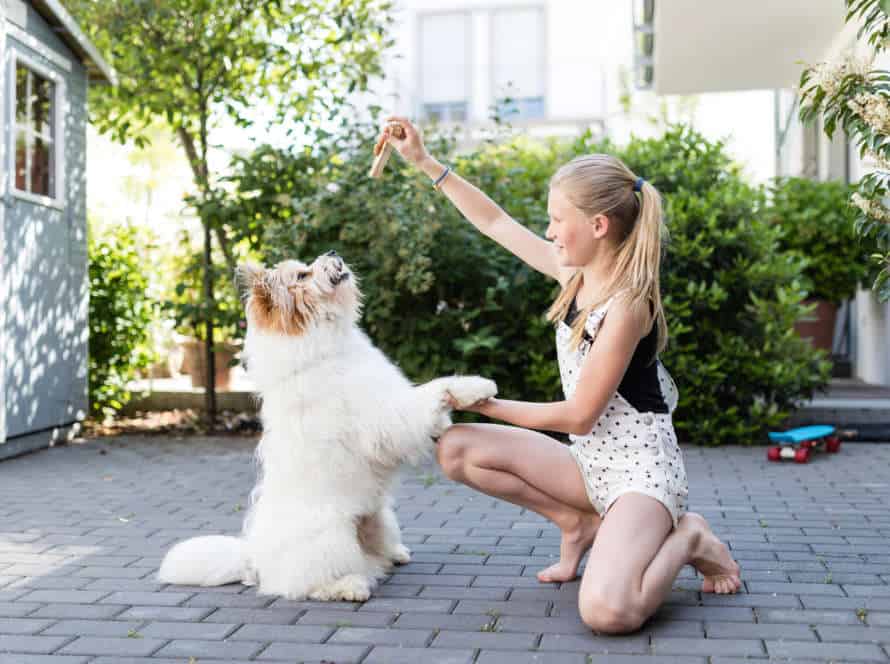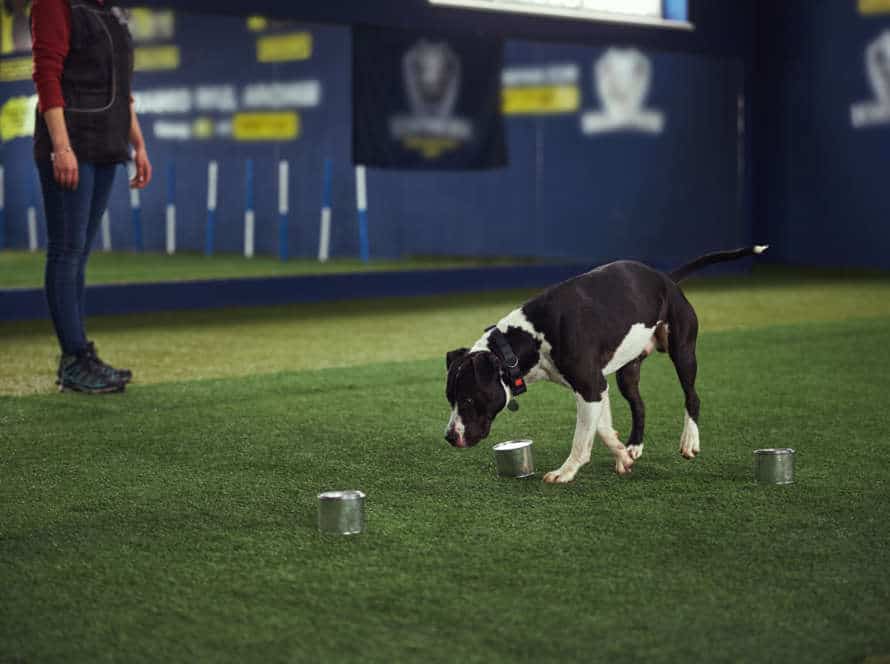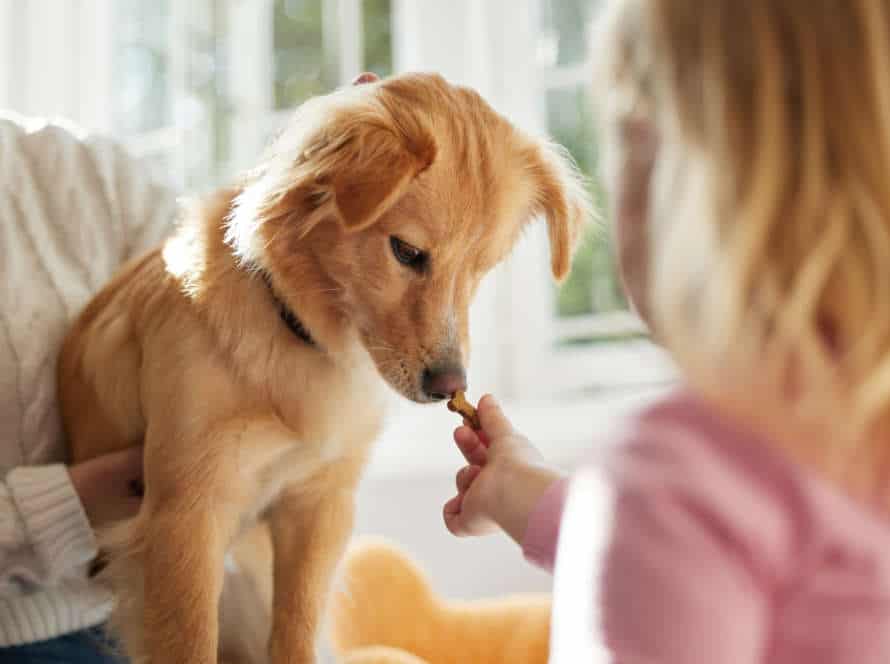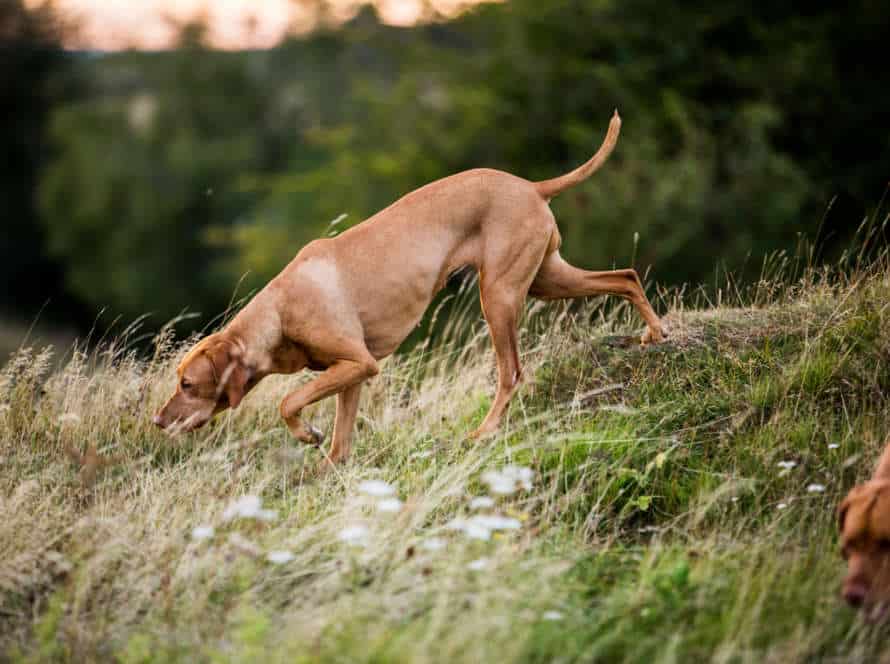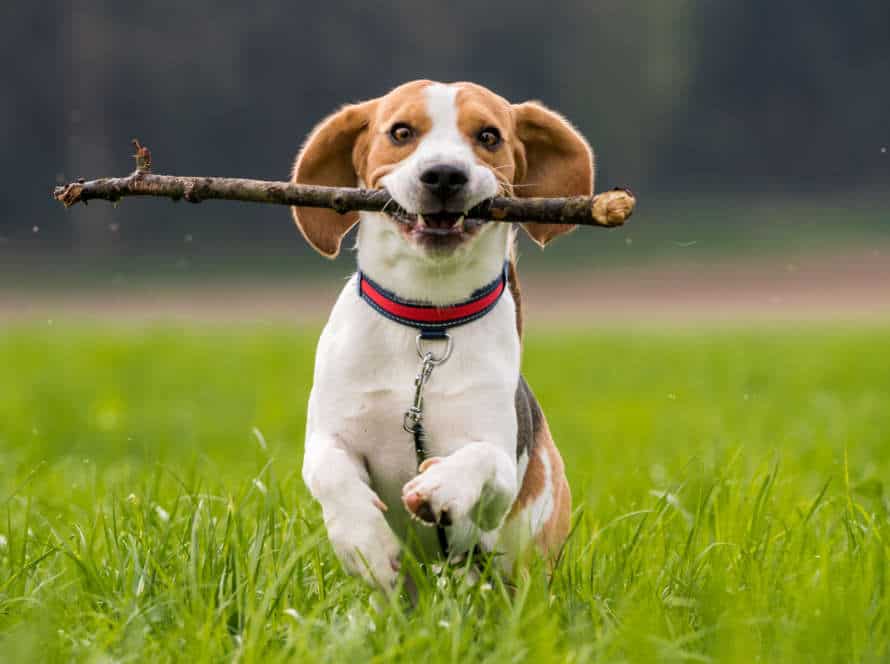Building Impulse Control: Teach Your Dog to Leave It
Teaching your pup to “leave it” is essential. It can stop destructive behavior and make sure they are safe. Here’s how:
- Show your canine a treat in your clenched fist and say “leave it”.
- Wait for them to quit trying to get the treat. Reward with a different treat.
- Practice the command with various objects, making their value more appealing.
- Once your pet is good at the command, try it in different places and with distractions.
- Always reward your dog for following the command, never use physical punishment.
With steady training, your pup will learn the “leave it” command. This can help build impulse control and good behavior.
Understanding Impulse Control in Dogs
Impulse control is an imperative part of training your pup! It means teaching them to hold back their reaction to a stimulus until you tell them it’s okay. This kind of training makes your pup more obedient, reactive and responsive to your commands.
Before you start training, it’s important to understand how impulse control works in dogs. Let’s explore the fundamentals of impulse control in dogs!
Definition of Impulse Control
Impulse control in dogs is necessary to avoid behaviors like barking, biting, running away, and jumping. Teaching them the ‘leave it’ command is a great way to do this. Here’s how:
- Start with basic obedience training.
- Introduce distractions like toys or food gradually.
- Hold a treat or toy in your hand and tell your dog ‘leave it’.
- Reward them when they look at you, instead of the treat or toy.
- Increase the difficulty level by putting the treat or toy on the floor or move it around.
- With consistent training, your dog will learn impulse control and obey your commands.
The Importance of Impulse Control in Dogs
Impulse control is a must when training your pup. It helps them learn delayed gratification and is important for their safety and happiness. Knowing how to control impulses is key to guiding their behavior when it counts. This includes resisting the temptation to chase cats or squirrels or staying calm around other pooches. To teach your dog impulse control, use the ‘Leave It’ command.
To begin, pick an item that isn’t very interesting for your pup. Show them a treat and cover it with your hand, saying ‘Leave It’. Reward them when they ignore the treat. Slowly make the game more difficult by using more stimulating items like toys or food.
Impulse control will help your pet in all areas of life, making them more content and balanced. Pro Tip: Consistency and patience during training will ensure your dog’s impulse control develops.
Common Behaviors That Require Impulse Control
Impulse control is key for training your dog’s behavior. Plus, it keeps them from doing dangerous or disruptive things. Here are some common behaviors that need impulse control in dogs and tips to help.
Chewing: Dogs may chew on bad things out of boredom or fear. Stop this by giving them chew toys and teaching them to stay away from other stuff.
Jumping: Dogs may jump when excited or wanting attention. Discourage this by teaching them to sit and stay when meeting people.
Begging: Dogs may beg for food at mealtimes. To prevent, teach them to sit and wait patiently for their food.
To build impulse control, teach your dog “leave it.” Start with a simple object and tell them “leave it.” Give them a treat when they don’t touch it. Gradually make it harder by using more appealing objects and practicing in different places.
Training and Techniques to Build Impulse Control
Impulse control – teaching your pup to stay focused and think before acting – can make them more obedient. Several techniques can be used to develop this skill. Let’s look into different approaches to build impulse control in your pup!
Basics of Positive Reinforcement Training
Positive reinforcement training is a way to reward good behavior in dogs, instead of punishing bad. It is based on the idea that dogs learn and remember better when they are rewarded for being good.
One technique to help dogs control their impulses is ‘leave it’ training. This involves teaching them to ignore tempting objects and look at you instead.
To do ‘leave it’ training with positive reinforcement:
- Get two treats.
- Show your pup one treat and close your hand.
- Wait for them to show interest in the treat.
- Say ‘leave it’ in a firm yet calm voice.
- When they make eye contact, reward them with the other treat and praise them.
- Do this until they learn to ‘leave it’ without your command.
Tip: Positive reinforcement takes time and patience. So, be consistent and always give good behavior a reward.
Teaching the “Leave It” Command
Teaching your dog the “Leave It” command is key. This builds impulse control and helps keep your pup safe. Here’s how:
- Hold a treat in your hand and close your fist.
- Present the closed fist to your pup and say “Leave It” in a gentle yet firm voice.
- When they stop trying to get it, say “Good job!” and reward them with a different treat or praise.
- Repeat, gradually opening your hand and saying “Leave It“.
- Practice the command regularly, increasing difficulty with higher-value items.
- Pro Tip: Always reward your pup when they obey, even if the item isn’t valuable.
Using Distractions for Impulse Control Training
Impulse control training is vital for teaching dogs self-control and obedience. A great technique to build impulse control is to use distractions during training. Follow these steps:
- Begin by teaching your pup the “leave it” command with a treat. Place the treat on the floor and cover it with your hand. When they sniff or grab it, say “leave it” and reward them with a treat from your other hand.
- Once they understand this step, introduce distractions like toys, other dogs, or food. Practice the “leave it” command when your pup is distracted by these.
- Gradually add more distractions as your dog gets better at the command.
Remember to reward your pup generously for obeying the “leave it” command. And be patient – it might take time for them to learn self-control. Pro tip: Consistency and positive reinforcement are keys to successful impulse control training.
Common Challenges in Building Impulse Control
Training a pooch in impulse control is no mean feat! Common troubles that come with it may include: lack of concentration, confusion with commands, or an incapability to contain their enthusiasm. So, before starting the process, it’s vital to recognize the challenges – this will help you build the best possible environment for success.
Overcoming Food Aggression
Food aggression in dogs can cause problems with other animals or people. To counter this, you can teach your pup impulse control. A great way to do this is with “leave it” training. Here’s how:
- Hold a treat in your fist, and let your dog sniff or paw it.
- When they do, say “leave it” in a calm yet firm voice.
- After they stop trying to get the treat and look away, reward them with another one.
- Do this multiple times, and increase the amount of time your dog waits before getting the reward.
- Train them on different items and in different places to make “leave it” a habit.
Pro tip- Consistency is key. Be patient and consistent with training for the best results.
Addressing Toy Possessiveness
Possessive behavior towards toys is a challenge pet owners may face. Don’t worry, there are some useful ways to tackle this.
Here are some tips:
- Give your pup a simple toy.
- Say “take it” and let them take it.
- Immediately say “leave it” and close your hand around it.
- When they release the toy, give them a treat.
- Do this consistently and tempt them more as time goes on.
Consistency and patience are essential. With practice, your pup can learn self-control and break the possessiveness towards toys.
Reducing Jumping and Biting
Jumping and biting are common struggles for pet owners. But, there’s help! Here are some effective ways to reduce these behaviours:
- Teach your dog the ‘leave it’ command. This will help them control their impulses.
- Reward good behaviour! Praise or treats will reinforce positive behaviour.
- Use positive reinforcement training. This teaches new behaviours and rewards desired actions.
- Exercise and mental stimulation are key. A well-exercised pup is less likely to be impulsive.
Advanced Techniques for Impulse Control
Train your dog for impulse control! It’s an essential part of making them an obedient pup. The “leave it” command is one advanced technique to build a strong relationship between you and your pup, and make sure they act in the way you want. Here are more advanced techniques for teaching your pup impulse control!
Increasing Duration of “Leave It” Command
Teaching your pup to “leave it” is a must-have training command. It helps with impulse control and can keep them safe. To take it to the next level, you can increase the duration of the command! Here’s how:
- Start with a treat in a closed hand. Let your pup sniff it.
- Say “Leave it” and cover the hand/table.
- When they stop trying to get the treat, say “yes” or “good” and give them a treat from the other hand.
- Gradually increase the time the treat is covered.
- Make it harder by putting the treat on the floor or in another room.
- Consistent practice will help your pup resist temptation for longer.
- Pro tip: Practice in different places, with different treats.
Adding Distance and Distraction During Training
Adding distance and distraction during training is key for teaching your pup to “leave it.” Here’s how:
- Start at home, low-distraction. Introduce your pup to the command with a treat or toy in your hand.
- Once they understand it, add distance. Throw the treat or toy a short way and say “leave it.”
- Gradually increase the distance and distraction level. Throw it further away and use more tempting items.
- Practice consistently and reward them for good behavior. It takes time, but it’ll be worth it.
Training for Real-World Scenarios
Teaching impulse control to your pup is essential. A great way is the “Leave It” command. Here’s how:
- Get your pup’s attention in a low-distraction environment.
- Put a treat or object on the ground in front of them.
- Say “Leave It” firmly but calmly. Wait for pup to stop trying to get the item.
- Reward with a different treat or praise.
- Increase difficulty by using more tempting objects or more distractions.
With practice, your pup will learn to control their impulses and respond to “Leave It” in real-world scenarios.
Tip: Consistency and patience are vital. Remember to start low and increase difficulty.
Maintaining and Strengthening Impulse Control
Teach your pup impulse control! It’ll help them stay within boundaries and control their responses. Do regular practice and reward your pup for good behavior. Additionally, consistency and clear guidance will let your dog know what’s expected.
Consistency and Reinforcement in Training
Impulse control and consistency are important when training your pup. These exercises help them learn to make decisions without relying on you. Plus, it builds their self-control and focus!
Here’s how to do it:
- Start easy and slowly increase the challenge.
- Use positive reinforcement to reward good behaviour.
- Be consistent with commands and techniques.
- Remove distractions or temptations to set your pup up for success.
Rewarding desirable behaviour with rewards, play, or praise can help your pup make good choices. Plus, consistent practice of exercises will strengthen impulse control in time.
Incorporating Impulse Control into Daily Life
Incorporating impulse control is essential for humans and dogs. Here are some ways to maintain it:
- Notice triggers and reactions. Pause before reacting impulsively.
- Avoid acting on impulses. Wait for a better opportunity.
- Evaluate priorities and act accordingly.
To build impulse control in dogs, use the “Leave It” command. Follow these steps:
- Hold a treat in one hand, show it to the dog, then close the fist.
- Say “Leave It” and offer a treat in the other hand.
- Allow them to lick/nibble it.
- Repeat, increasing the wait time each time. With practice, control will improve.
Impulse control makes life easier and less stressful for us and our dogs.
Recognizing and Addressing Regression
Regression in impulse control is when a trained pup suddenly forgets their training and does unwanted things. Recognising and tackling regression is important for keeping their impulse control. Here are tips for recognising and addressing it:
- Keep a journal of your dog’s progress and have regular training sessions to keep track.
- If regression occurs, go back a step and use easier tasks or controlled environments to rebuild their confidence.
- Make training fun, positive, and rewarding to keep pup interested.
- No scolding or punishment; use positive reinforcement and rewards for good behaviour.
Training a pup to leave it takes time, patience, and consistency. The benefits are worth it though; your pup will be better-behaved, safer, and more enjoyable. Pro Tip: Even after learning impulse control, keep reinforcing the training – it enhances behaviour!
Conclusion and Final Thoughts on Building Impulse Control
It is essential to help your pup become a well-behaved pet by teaching them impulse control. Use the “Leave It” command to help them learn self-control and understand that when you give a command, they should obey. We have discussed the importance of impulse control, why it is important for your dog to learn it, and tips on how to incorporate it into your training. Now, let’s finish with some final thoughts.
Summary of Key Takeaways
To sum up, it’s essential to teach dogs impulse control. The “Leave it” command is a great way to do this. Here are the key points:
- Start early.
- Use reward-based training.
- Practice frequently and in different spots.
- Remain patient and keep a relaxed vibe.
Remember, building impulse control takes time, patience, and consistency. It’s worth it though! A well-trained pup will live a joyful, healthy life with you.
Long-Term Benefits and Advantages of Impulse Control
Impulse control is vital for canine training. There are many long-term benefits to teaching your dog to control their impulses, such as:
- Focus on commands, bringing you and your pup closer together
- Make better decisions, such as not chasing after a squirrel or running into traffic
- Reduce anxiety and build confidence
To develop impulse control, start with the “leave it” command. Start simple, like a treat or toy, then move onto more difficult temptations in environments with more distractions. Consistent training and patience are key. With it, you and your pup can achieve long-term success in mastering impulse control, leading to a happier and healthier life together.
Encouragement for Continued Training and Improvement.
Congrats on making it so far in your doggy training journey! It’s a never-ending process, so don’t forget to practice regularly. Don’t give up if you hit some bumps – focus on the progress you and your pup have made. Keep it consistent, even if it’s just a few minutes each day. Celebrate the successes, big or small. Positive reinforcement will help both of you stay motivated. If you need help, there are resources like trainers, online communities, and instructional vids. Training your dog to stay in control will strengthen your relationship. Keep going!
Frequently Asked Questions
1. What is impulse control in dogs?
Impulse control is a dog’s ability to resist their natural urges and impulses, such as the desire to grab an object or chase after a squirrel. Dogs with strong impulse control are better able to focus on their training and behave appropriately in a variety of situations.
2. Why is teaching a dog to “leave it” important?
Teaching a dog to “leave it” is important because it keeps them safe and prevents them from engaging in harmful or destructive behaviors. It also helps to reinforce impulse control and obedience in your dog.
3. How do I teach my dog to “leave it”?
To teach your dog to “leave it,” start by showing them a desirable object, such as a treat, and telling them to “leave it.” When they do, reward them with a different treat or praise. Gradually increase the difficulty by using objects with higher value, such as toys or food on the ground. With consistent practice, your dog will learn to leave objects alone when instructed to.
4. What should I do if my dog doesn’t respond to the “leave it” command?
If your dog doesn’t respond to the “leave it” command, try using a more enticing reward, such as a higher-value treat or a toy. You may also need to start with simpler objects and work your way up to more challenging ones. Consistency and repetition are key to reinforcing the behavior.
5. How long does it take to teach a dog to “leave it”?
The length of time it takes to teach a dog to “leave it” can vary depending on the dog’s age, breed, and temperament, as well as how consistently and frequently the training is practiced. Some dogs may learn the behavior in a few days, while others may take several weeks or months.
6. Can older dogs learn impulse control?
Yes, older dogs can learn impulse control with consistent and patient training. While it may take longer for an older dog to learn new behaviors, it is possible for them to improve their impulse control and enjoy the benefits of a more obedient and well-behaved dog.


